Florists often encounter many problems, as their green pets get sick from time to time and are attacked by harmful insects. Very often complaints of gardeners are heard, for example, on small midges. How to get rid of midges in flowers, we will learn in this article.
Material Content:
Wound up midges in flowers: reasons
Adults are almost harmless, but the larvae cause severe damage to plants. Females lay their offspring in the land of indoor plants. Young individuals feed on the roots of flowers, and this leads to rotting of the roots and drying out.
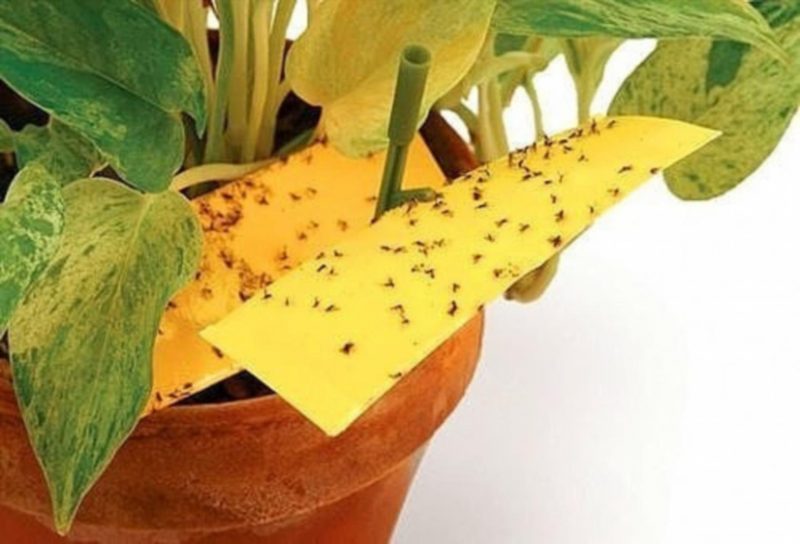
The most common causes of these malicious insects are:
- Waterlogged soil. Most people believe that the more plentiful the watering, the better. In fact, excessive watering provokes the appearance of many diseases and creates conditions for the life of pests. Water the plants only when the top layer dries.
- Open windows without mosquito nets. Insects can simply get into the house through open doors and windows and, having discovered wet soil, take a fancy to it for breeding offspring.
- Poor soil. If the substrate has not decayed organic matter, this is enough to start midges in flowers. Most pests prefer to lay their eggs in lukewarm and wet soil. Out of ignorance, the owners themselves often contribute to this, adding coffee grounds or tea leaves as fertilizer on the advice of acquaintances. This wet waste attracts insects very much.
Sometimes you can buy a plant with already contaminated soil. In this case, it will need to be completely replaced.
In other cases, first you need to eliminate the causes, and then take measures to get rid of midges.
Types of midges on flowers: black, white
These pests are small, but perfectly visible to the naked eye.
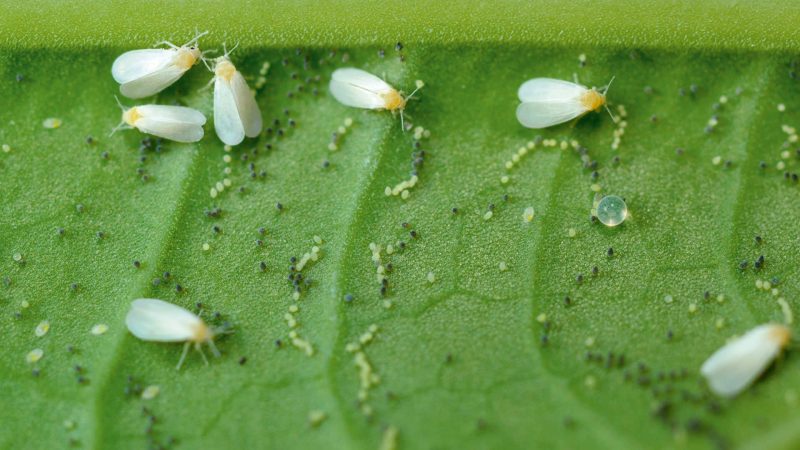
There are two most common types of these insects:
- White midges most often live on the surface of a flooded substrate near the base of the plant trunk. Their sizes are small - from 0.3 to 0.9 mm. They are very mobile and actively move from one part of the plant to the other. Most often they can be found in the cold season. Low temperature, dampness, an excess of organic matter - these conditions create a favorable environment for their life and reproduction.
- Black midges appear in flowers just as often. For people, they do not pose any danger, but bring a lot of inconvenience, sitting on the dishes with food and products. They can be entered into the soil when fertilizing with organic matter or when using a non-disinfected substrate.
Such insect pests severely damage the roots of the plant and subsequently can even lead to its death.
What plants most often bring midges
I must say that midges do not attack all types of plants. Favorite places in black midges are indoor flowers with dense leaves - azaleas, ficuses, violets. Therefore, these plants should never be flooded.
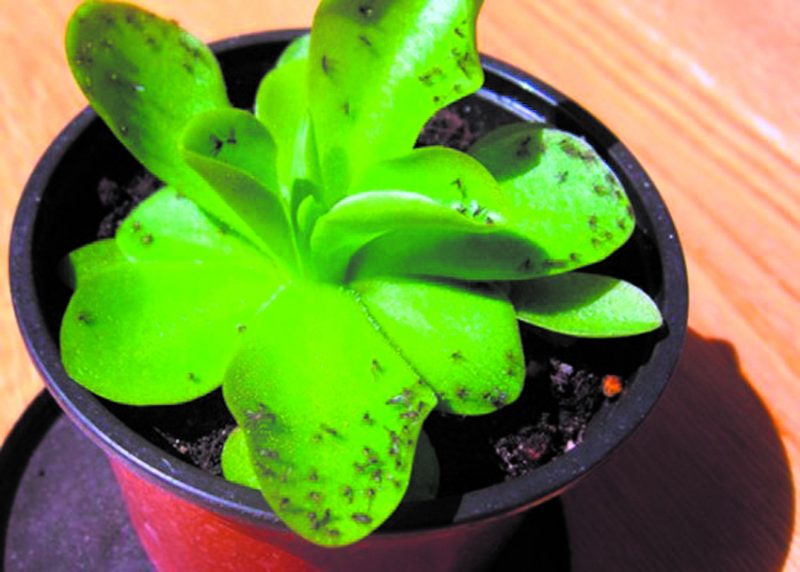
White midges most often attack gardenia, camellia, fuchsia and begonia.
How to get rid of midges and their larvae
The sooner you take measures to get rid of midges, the faster you can destroy them. Therefore, it is necessary from time to time to inspect all indoor plants in order to detect pests as early as possible.
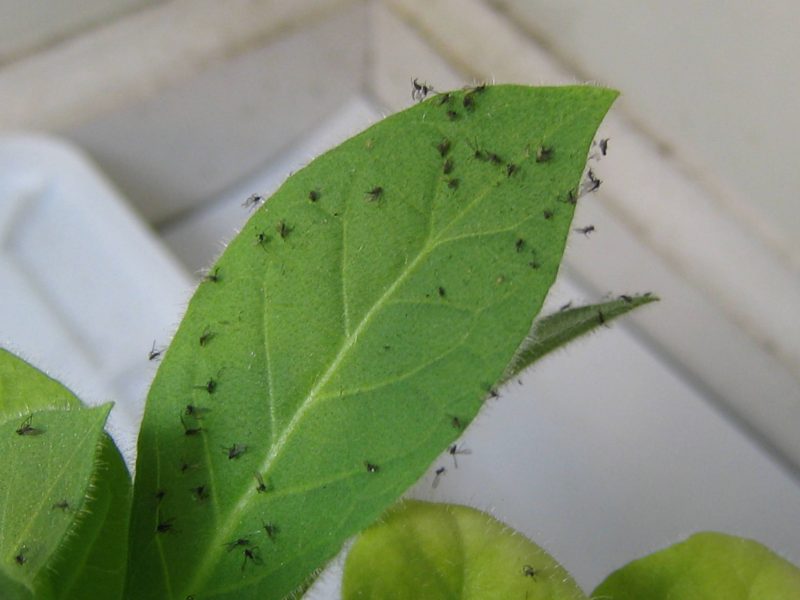
The methods described below are suitable for the quick and effective destruction of both white and black midges.
All green pets should be treated, as the larvae can be invisible. Left in the soil, they will turn into adults, and their life cycle will go in a new circle.
Folk methods
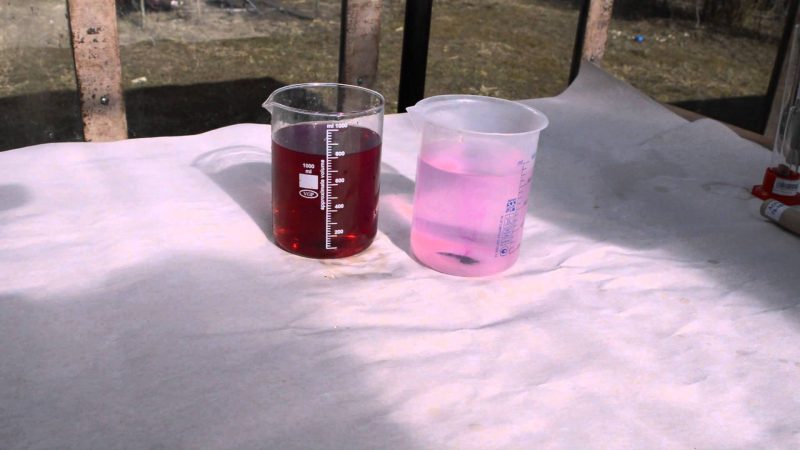
- First of all, let the soil dry so that 20 mm of the top layer is completely dry.
- Then you need to remove the sick and weak leaves, loosen the earth and catch adults. To do this, you need to make a simple trap from a sheet of yellow cardboard and honey. Cardboard should be cut into small strips, spread with honey and put near flowerpots. In extreme cases, you can do with purchased sticky tapes, they also attract flying insects well.
- You can use a vacuum cleaner with a small nozzle and walk it throughout the land of flowerpots and window sills. It will easily pull in all the insects, so the bag must be discarded after that.
Folk methods are safe and very affordable, since all the necessary products and ingredients are in every home.
The simplest means:
- Weak solution of potassium permanganate. Such a liquid needs to be watered with an infected plant. The main thing is not to make a concentrate, otherwise you can burn the roots. The solution should be pale pink.
- Garlic water. Take 3 large heads of garlic, chop and pour into a liter jar of water. Leave on for 4 days, strain, spray and water the plant.
- Orange. Stick the peeled skin into the ground in several places.
- Ash. Sprinkle the soil with wood ash. This is not only a good way to disinfect, but also an excellent fertilizer.
- Matches. Stick them into the substrate with sulfur heads down. After 24 hours, check if sulfur has disappeared. If not, matches need to be replaced with new ones.
- Garlic. Take three slices, cut into pieces and spread on the ground.
To combat midges in a pot, you can also try to water the flowers with a weak solution from household or tar soap.
Chemicals
If home remedies did not help, then you need to try purchased drugs. They can be bought at any hardware store.
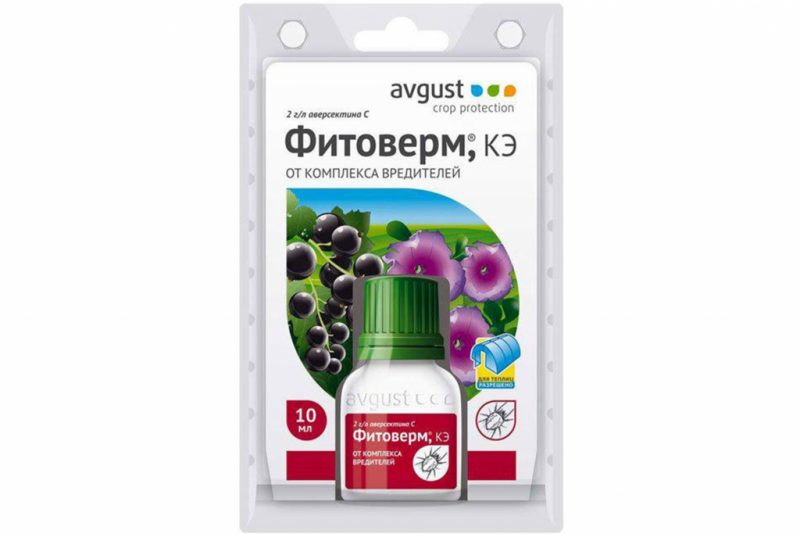
The choice is wide:
- "Aktara";
- Fitoverm;
- Kinmix
- "Dichlorvos";
- Inta-vir.
Before you start using, you must read the instructions, as each drug has its own characteristics.
Of great importance is the temperature of the water and the ratio of the liquid to the active substance. After processing, the plant does not need to be watered for 3-4 days.
It is very convenient to process flowerpots with "Dichlorvos". To do this, put the infected plant in a bag and spray the drug, tightly closing the film. It is necessary to ensure that the drug does not get on the leaves of the plant, only on the ground, a pot and a bag. After 5 hours, all insects should die.
Soil replacement
If there are too many larvae in the ground, it is better to transplant the flower into a new ground. But before that, it must be processed, calcined in the oven for an hour, and add mineral fertilizer. When replanting the roots, you need to clean it well from the ground, which can be infected by midges.
Preventive actions
To prevent the repeated invasion of white or black midges in indoor plants, it is necessary to review the conditions of their maintenance.
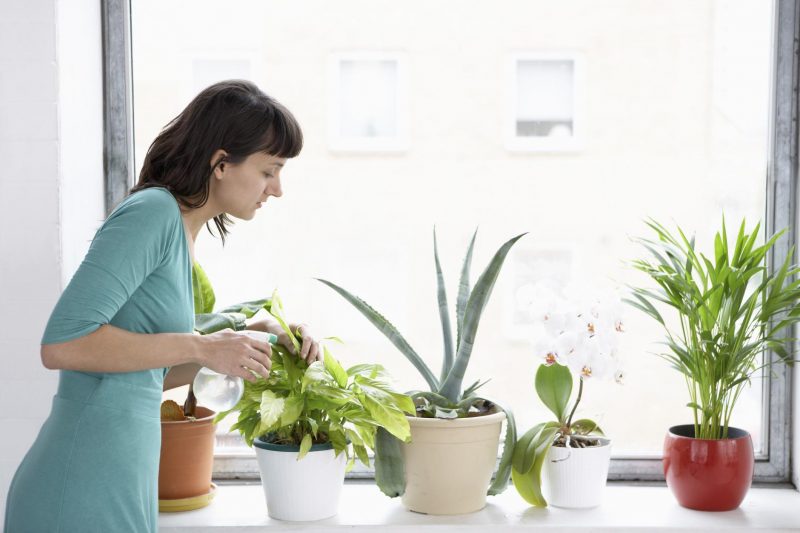
First of all, you need to pay attention to such parameters:
- Watering. He must be moderate. This applies to both frequency and volume. In hot weather, plants can and should be watered more often, in the cold season - less often.
- Humidity. Before watering, you need to evaluate how wet the substrate is. If it is even a little wet, then you need to wait a while with watering.
- Drainage. Each flowerpot should have a good drainage layer. This prevents moisture stagnation, organic decay and soil acidification.
Also, do not forget to periodically gently loosen the substrate, so as not to damage the roots. This procedure enriches the soil with oxygen and prevents decay.
The room where the indoor flowers are located should be regularly ventilated. The main thing is to ensure that the windows are covered with nets, otherwise intruders can get inside.
Following these simple tips, you can keep your houseplants strong, healthy and prevent the invasion of unsolicited pests.












